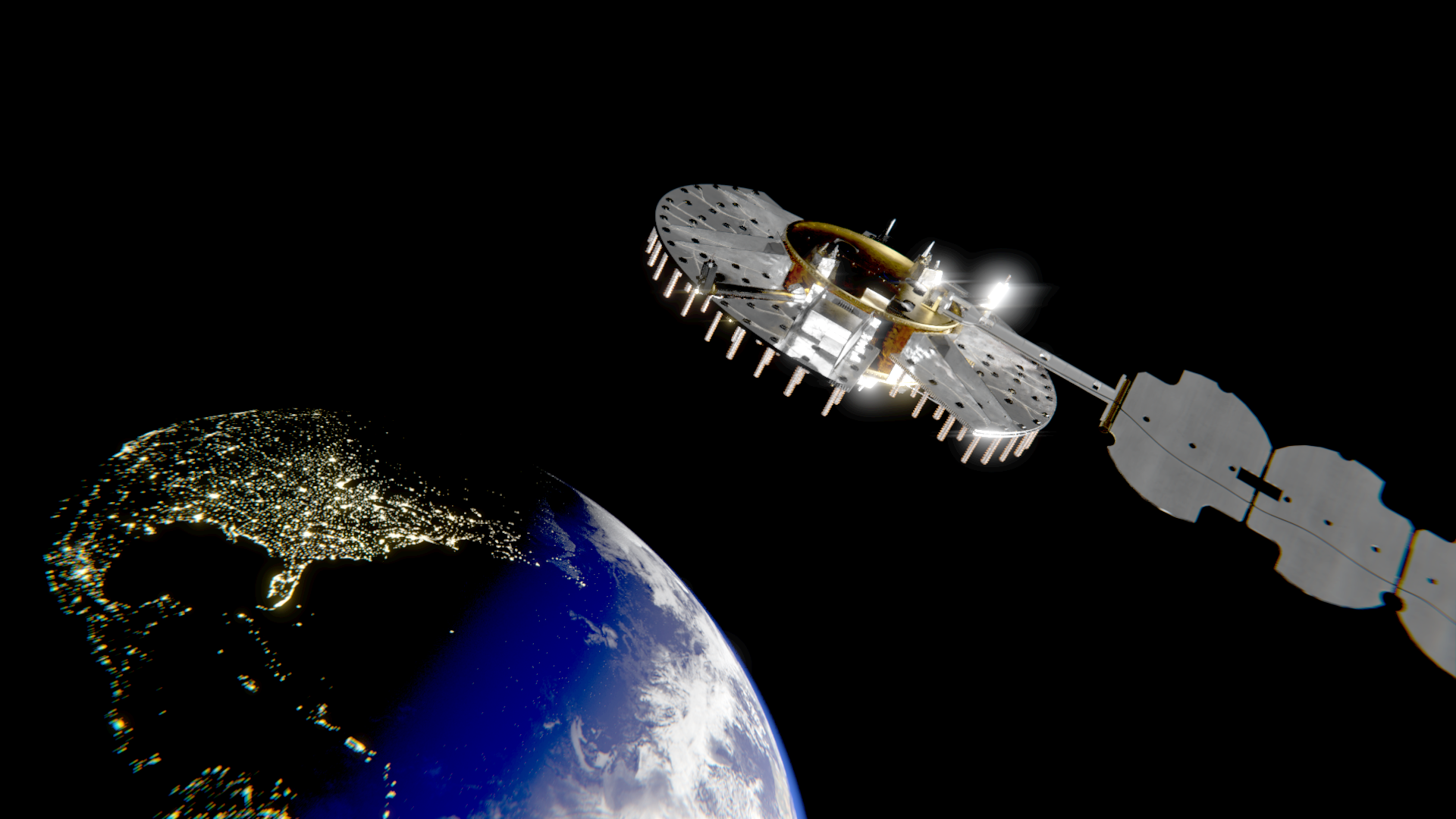AFRL’s Navigation Technology Satellite – 3 Spacecraft Passes Critical Design Review
KIRTLAND AIR FORCE BASE, NM. — The Navigation Technology Satellite – 3 (NTS-3) spacecraft passed Critical Design Review (CDR) on June 25, a major milestone, allowing L3Harris, the prime contractor for the spacecraft, to proceed into fabrication, demonstration, and test. In partnership with the Space and Missile Systems Center, United States Space Force, and the Air Force Life Cycle Management Center, the Air Force Research Laboratory (AFRL) will demonstrate revolutionary space-based position, navigation, and timing (PNT) techniques and technologies to detect and mitigate interference and increase system resiliency for users.
L3Harris’s novel integration of electronically-steerable phased-array antennas, flexible waveform generators, and commercial off-the-shelf technologies helped them secure the NTS-3 contract in December 2018. Having passed CDR review, L3Harris will continue their work on the satellite in preparation for an anticipated launch in 2022. AFRL will operate NTS-3 in geosynchronous orbit for a year. The spacecraft will broadcast experimental PNT signals that will test new architectures designed to increase resilience to signal interference and responsiveness to warfighter needs.
In 2019, the U.S. Air Force designated NTS-3 as one of three Vanguard programs that aim to deliver remarkable new capabilities that provide warfighters with superior advantages in the battlefield. In addition to the space-based test vehicle, the NTS-3 program will demonstrate advanced ground-based command and control and agile software-defined radios for the user. “The NTS-3 Vanguard is an experimental, end-to-end demonstration of agile, resilient space-based positioning, navigation, and timing,” said Arlen Biersgreen, Air Force NTS-3 Program Manager. “It has the potential for game-changing advancements to the way the Air Force provides these critical capabilities to warfighters across the Department of Defense.”
NTS-3 will advance PNT technology across space, ground control, and end-user segments. AFRL’s hand-in-hand integration with SMC and AFLCMC enable direct transition of these technologies and lessons-learned to future generations of America’s Global Positioning System (GPS). The Air Force’s contract for the NTS-3 prototype satellite provides a follow-on option for rapid production and deployment of an entire constellation of satellites in geosynchronous orbit. The technology’s potential to bolster and enhance GPS will strengthen America’s PNT solution for decades to come.

Artist’s concept for NTS-3 in geostationary orbit. Harris Corporation will integrate NTS-3 using Northrop Grumman’s ESPAStar bus, building on EAGLE’s flight heritage. Graphic Credit: 2d Lt Jacob Lutz, AFRL/RV
